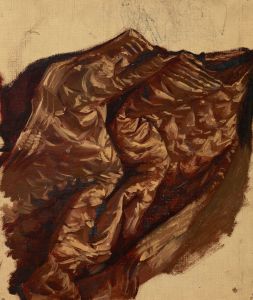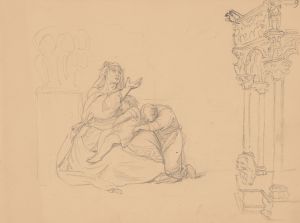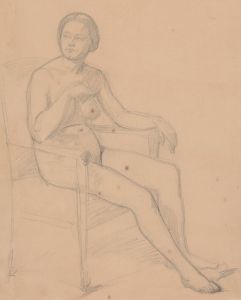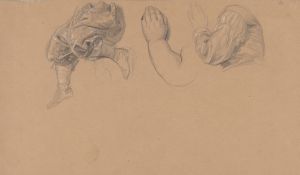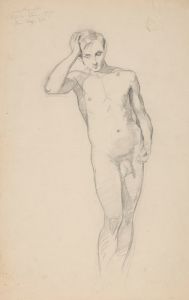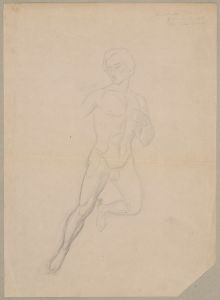
Studia rąk Katarzyny Jagiellonki, księcia Jana Finlandzkiego i strażnika do obrazu ‘Katarzyna Jagiellonka w więzieniu w Gripsholmie’
A hand-painted replica of Józef Simmler’s masterpiece Studia rąk Katarzyny Jagiellonki, księcia Jana Finlandzkiego i strażnika do obrazu ‘Katarzyna Jagiellonka w więzieniu w Gripsholmie’, meticulously crafted by professional artists to capture the true essence of the original. Each piece is created with museum-quality canvas and rare mineral pigments, carefully painted by experienced artists with delicate brushstrokes and rich, layered colors to perfectly recreate the texture of the original artwork. Unlike machine-printed reproductions, this hand-painted version brings the painting to life, infused with the artist’s emotions and skill in every stroke. Whether for personal collection or home decoration, it instantly elevates the artistic atmosphere of any space.
Józef Simmler was a notable Polish painter of the 19th century, recognized for his historical and genre paintings. One of his significant works is "Katarzyna Jagiellonka w więzieniu w Gripsholmie" (Catherine Jagiellon in Prison at Gripsholm), which depicts a poignant moment in the life of Catherine Jagiellon, a Polish princess and later Queen of Sweden.
Catherine Jagiellon was born in 1526, the daughter of King Sigismund I the Old of Poland and Bona Sforza. She became an important political figure through her marriage to John, Duke of Finland, who later became King John III of Sweden. The painting by Simmler captures a period of her life when she was imprisoned at Gripsholm Castle in Sweden.
The historical context of this imprisonment is tied to the complex political landscape of Northern Europe during the 16th century. Catherine's husband, John, was involved in a power struggle with his half-brother, King Eric XIV of Sweden. In 1563, during the Northern Seven Years' War, John was accused of treason by Eric and was subsequently imprisoned along with Catherine at Gripsholm Castle. This period of captivity lasted until 1567, when Eric's mental instability led to his downfall, and John was released to eventually become king.
Simmler's painting is renowned for its emotional depth and attention to detail, capturing the somber mood of Catherine's imprisonment. The composition focuses on Catherine, depicted with a sense of dignity and resilience despite her circumstances. Her hands are a focal point in the painting, symbolizing both her noble lineage and her personal strength. The presence of Duke John and a guard in the painting adds to the narrative, highlighting the shared ordeal of the couple and the constant surveillance they were under.
Józef Simmler was known for his meticulous approach to historical accuracy and his ability to convey the emotional states of his subjects. In "Katarzyna Jagiellonka w więzieniu w Gripsholmie," he uses a subdued color palette and careful attention to the characters' expressions and gestures to evoke the gravity of the situation. The painting not only serves as a historical document but also as a testament to Catherine's fortitude and the enduring bond between her and John during their imprisonment.
Simmler's work is part of a broader tradition of Polish historical painting that sought to capture and commemorate significant events and figures from Poland's past. His paintings are appreciated for their narrative clarity and emotional impact, making them valuable both as works of art and as historical records. "Katarzyna Jagiellonka w więzieniu w Gripsholmie" remains an important piece in the canon of Polish art, reflecting the turbulent history of the Jagiellonian dynasty and the personal stories within it.





